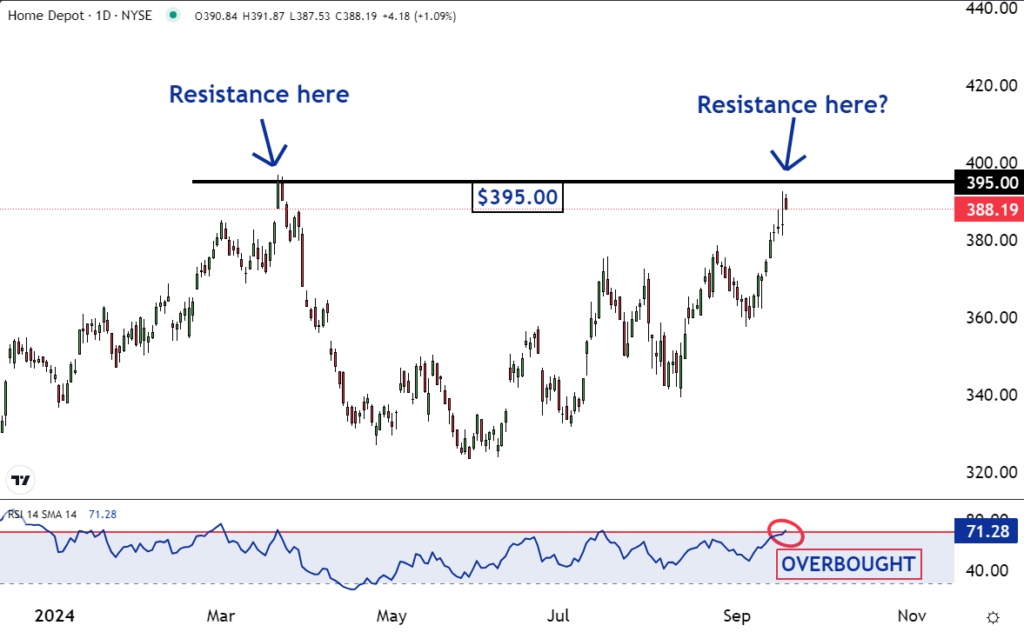Home Depot Inc. HD has agreed to a nearly $2 million settlement to address allegations from California prosecutors that the company overcharged customers at checkout due to price discrepancies.
Meanwhile, overbought stocks nearing resistance levels often experience reversals, and Home Depot’s stock is currently showing these signs. With its share price approaching a key resistance point, it stands out as our Stock of the Day.
Most of the time, a stock stays within its usual or typical trading range. But sometimes, investors and traders can be aggressive and emotional. Their buying can push the stock above this range, which is considered overbought.
This is an important dynamic. It will draw sellers into the market. They will be expecting a reversion to the mean or move lower. Their selling could put pressure on the stock and force it down.
The bottom half of the chart below shows the Relative Strength Index (RSI), a popular momentum indicator. When the blue line crosses above the horizontal red line, it indicates overbought conditions, which is now the case.

The reason resistance often forms at previous levels is rooted in investor psychology, specifically buyer’s remorse.
There are traders and investors who bought Home Depot when it was at a peak of around $395 in March and came to regret their decision when the stock sold off just after. Some of them vowed to sell their shares if they could get out of the position without losing any money.
As a result, if the stock gets back to their buying price, they will be placing sell orders. And if there are enough of these orders, it will create resistance at the level once again.
Stocks can pull back from resistance due to anxious sellers who fear that others might be willing to sell at a lower price. They understand that buyers will likely turn to those sellers, driving prices down.
So, they reduce the prices at which they are willing to sell. Other anxious sellers see this and do the same thing, resulting in a snowball effect that forces the shares into a downtrend.
The best traders understand psychology. They recognize that resistance often forms at previous peaks due to buyer’s remorse and that stocks typically pull back from resistance as anxious sellers emerge. This insight enables them to capitalize on these movements and profit.
Read Next:
Photo: Shutterstock
© 2024 Benzinga.com. Benzinga does not provide investment advice. All rights reserved.
Comments
Trade confidently with insights and alerts from analyst ratings, free reports and breaking news that affects the stocks you care about.